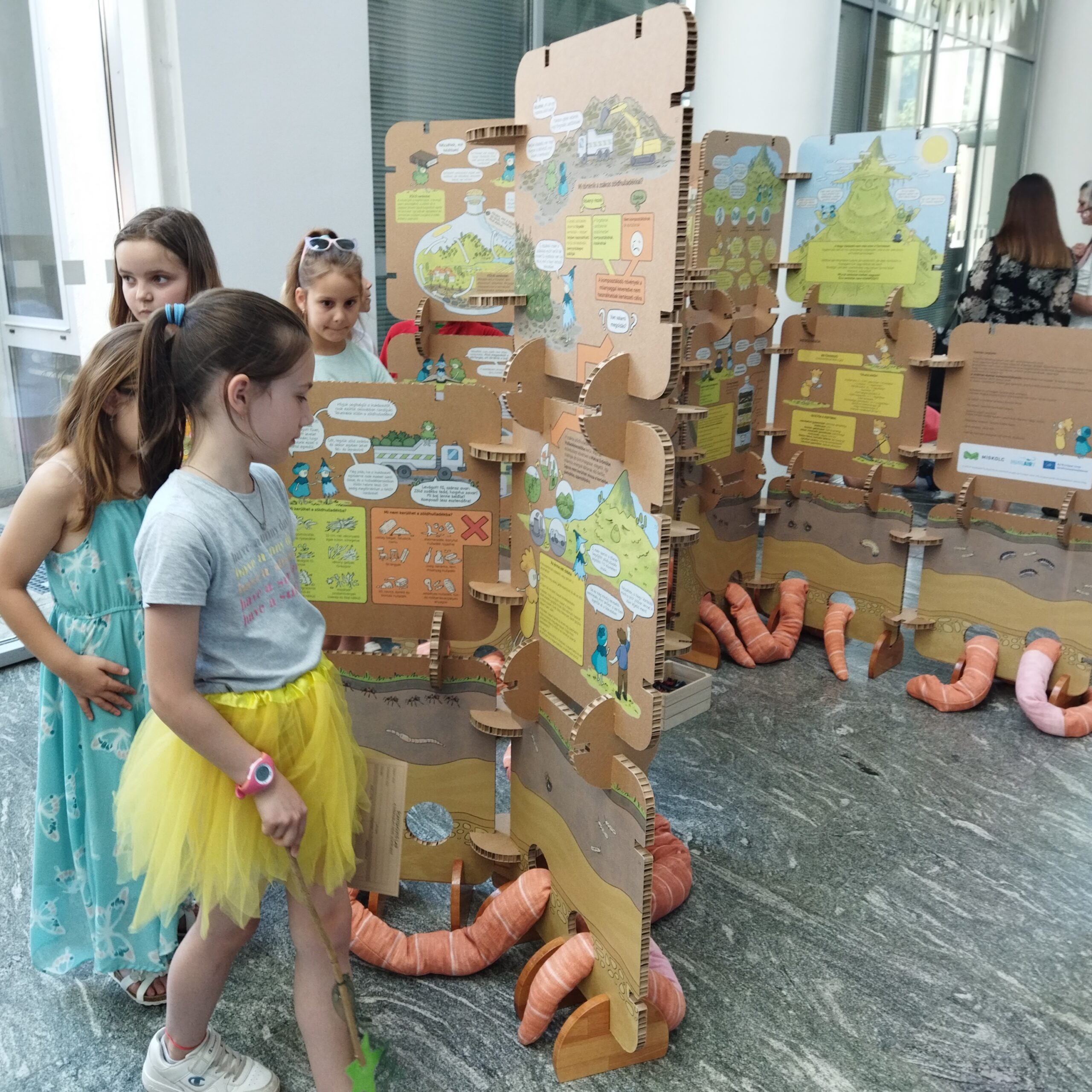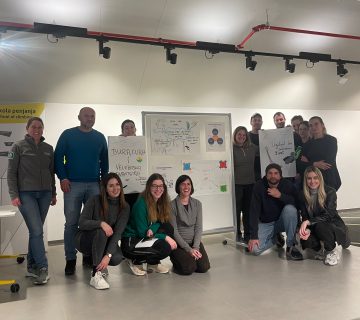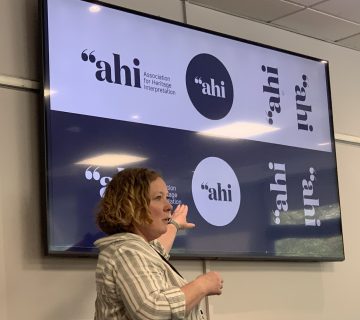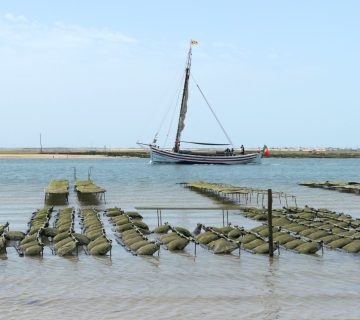The challenges of environmental sustainability in exhibition planning.
When it comes to exhibition planning, we have to face a very complex and often challenging task where we navigate amid the client’s needs and wants, content development, budget, design, deadlines, and so on. We are very much focused on the ‘creation’. But how consciously do we plan for the full life-cycle of the exhibition, and think about what happens with all of that creation? We hand over the final product to the client, and most probably we are not there when it all needs to be disposed of at the end of its life. What environmental impact do we load into the exhibition in the first place? This case study casts some light on these questions and dilemmas.
Spoiler alert… You cannot act perfectly, but you can do your best.
The first experience with our small project of a travelling exhibition on composting was that, despite the very topic (i.e.composting), it does not necessarily come to one’s mind that not only the content, but also the form can contribute to the idea of sustainability. Fortunately, our client quickly bought into our suggestion to make the final product itself compostable.
We already had some knowledge about different options for materials and technologies, but by no means are we experts in environmentally sound exhibition design. Beyond being environmentally friendly and compostable, we wanted the exhibition to be durable (for repeat assemblage and disassemblage), light-weight (for transport/handling), and to fit within a tight budget. So, we embarked on this quite interesting and challenging journey.
For the panels we opted for honeycomb sandwich cardboard. But we found that this material is not widely available in Hungary, and all but one of the few companies that do work with it took only bulk orders. So, when you put yourself up for a challenge, your work partners or suppliers may narrow down quickly if you do not follow the mainstream in the use of materials.
But at least we had that one company to work with. What we found about the honeycomb cardboard was that the product certification included only that these panels were environmentally friendly, being FSC-certified and fully recyclable. But are they compostable? The company that produces them didn‘t know: “I’m guessing this will be no problem”. This wasn’t quite a good enough response for us. With some further investigation we found out that the layers are glued together with water-based glue. Considering that plain corrugated cardboard is widely used in composting and gardening, we could probably tick the criterion of compostable for our boards.
Although we now had our material, finding the best printing technology was not so easy, either. Our first pick was risograph printing, using plant-based ink. As it is a cold print, this needs less energy, and the stencils can be made of plant fibres. However, we had to opt out of this, as it is not suitable for direct printing onto cardboard, and so would require glueing and mounting, and individual stencils for each layer of colours and prints, as well as a high rate of test prints. In our case the production of one single copy of each panel would have produced a disproportionally large volume of waste.
Our next best option was direct UV-printing, but its environmental label of ‘greenguard gold’ is merely about the low level of chemical emissions of the finished print and does not inform about its production and if its ingredients are of compostable grade. So we tried to contact the factory, but again in vain. Can we tick this box for compostability with a good conscience? Not a hundred percent. At this point we relied on the printing company to advise us, as it has ISO certifications and better access to information. And also the European Standard UNE-EN 13432:2000 (on compostable packaging) that allows “…a small percentage of non-compostable products, provided that they do not produce a negative effect on the quality of the final compost…”.
We realised how limited transparency is for the end user, and we have to be aware of potential ‘greenwashing’.
But you can come to more optimistic conclusions, too. If we ask questions of our suppliers and make enquiries, individual voices can add up, and might soon create a larger demand for full life-cycle sustainability in the market. It is in your power to search for alternatives, and new technologies. By looking into innovations that serve sustainability even in exhibition design, and having the courage to become early adopters, we can actually help those innovations become more mainstream. And so can contribute to forming new norms.
And finally, life-cycle assessment – including environmental sustainability – should be just as important a part of exhibition planning as other aspects. Of course, reliable guidelines would come in handy in this process. Some museums and museum associations have run projects on sustainable exhibits. But, there are still not many resources on this issue. So we would also love to hear from IE members on your experiences and best practices. We are willing to collect them and develop further a knowledge base for our community.
We found these links useful or interesting (the order does not reflect importance or other bias):
https://nachhaltige-ausstellungen.de/
https://museumenvironments.com/sustainabledesign/
https://creativefuturesacademy.ie/courses/professional-certificate-in-sustainable-exhibition-making/
https://www.articheck.com/artevolve-sustainable-exhibition-planning-green-materials-green-methods/
Zsuzsa Tolnay is a freelancer engaged in heritage interpretation and World Heritage. She is based in Hungary, and can be reached at: tolnayzs@gmail.com. Erika Szmoradné Tóth is a freelancer in the field of interpretation of natural heritage and ecoeducation. She lives in Hungary. Contact her at: bodvavolgykincsei@gmail.com.
To cite this article: Tolnay, Zsuzsa & Tóth Szmoradné, Erika (2024) ‘Can we live up to what we preach about?’ in Interpret Europe Newsletter 2-2024, pg.18-19.
Available online: https://interpret-europe.net/wp-content/uploads/2024/07/PDF-Newsletter-2024_2.pdf




